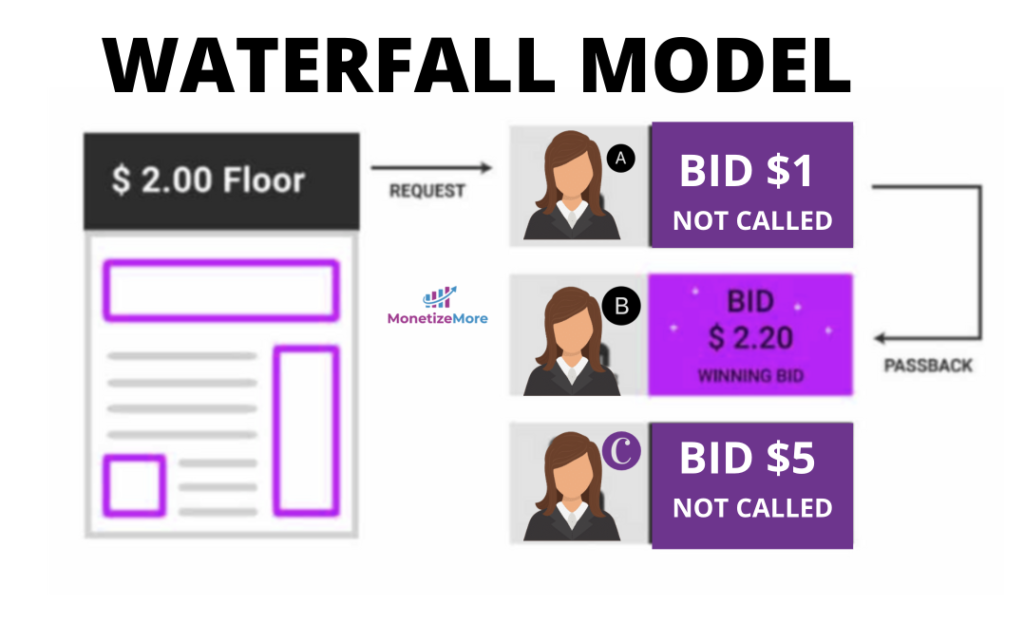As many industry professionals are already aware, Google has taken the strategic decision to delay its bidding deadline, a move that’s sparking debates and discussions across the digital landscape.
This move reflects Google’s commitment to ensuring a smooth and seamless integration for publishers. Such a step not only paves the way for enhanced optimization but also underscores the tech giant’s dedication to adapting and catering to the needs of its vast user base.
Within this article, we will delve deep into the ramifications of this change, offering insights and analyses to shed light on the evolving dynamics of the digital advertisement sphere.
Understanding the Google Bidding Deadline
To comprehend the weight of this announcement, it’s imperative to have a foundational understanding of Google’s bidding process.
Bidding in the Google Ecosystem: This is a complex algorithm-driven process where advertisers bid for specific keywords or audiences. The goal is to position their advertisements in the most visible sections of Google’s platforms, be it on the search results page, YouTube, or Google Display Network.
Google’s Updates on Waterfall and Bidding Calls: What Publishers Need to Know

- Phasing Out Waterfall Calls: Until 31st October 2023, Google will start reducing its response to waterfall calls lacking a bidding ad unit. By the end of October, such calls will no longer be entertained by Google Ads.
- Single Calls Post-Deadline: Post the deadline, non-bidding waterfall calls will get a response only if there’s just a single call in the sequence. In such cases, Google Ads may still consider purchasing on mediation waterfalls with that lone call directed at Google Ads demand.
- Hybrid-Waterfalls Support: After October 2023, Google will attend to non-bidding waterfall calls, even those with multiple such calls, but only if they include Google’s bidding ad unit. This means that Google Ads will still interact with several calls within these hybrid waterfalls on partner platforms. This is a crucial update many publishers have been awaiting.
- Shift Away from Non-Bidding Calls in 2024: It’s vital for publishers to note that by early 2024, Google aims to move away entirely from responding to any non-bidding waterfall requests, even in hybrid settings.
For publishers, this essentially means adapting their strategies to incorporate Google’s bidding ad units, especially if they wish to remain relevant and effective in their advertising endeavors.
What happened earlier this year?
Google, in May, unveiled a game-changing decision in its advertising approach. Here’s a simplified breakdown of what this means for publishers:
1. The Big Change
Google will no longer support the traditional method of delivering ads, known as non-bidding calls, starting from 31st October 2023.
2. Google’s Historical Stance
Traditionally, Google has kept its advertising demand largely exclusive to its own platform, AdMob. They did this by not openly promoting bidding outside AdMob, instead preferring a fixed pricing model, known as “waterfall instances.”
3. A Sudden Strategy Shift
Now, Google is urging publishers to move away from these waterfall instances. Instead, they want publishers to adopt AdMob’s bidding system.
4. Who Does This Impact?
This change affects a broad spectrum of publishers, especially those using ads to generate revenue for their games and apps. Given AdMob’s ubiquity in the ad space, this is a significant chunk of the publishing world.
5. The Core Takeaway
For publishers, the traditional method of earning through fixed ad prices on AdMob is coming to an end. In its place, a more dynamic system of real-time bidding will become the norm. This shift will require publishers to adapt their monetization strategies, ensuring they are aligned with Google’s new direction.
In essence, Google is steering the ad industry towards a more competitive and real-time approach, which could lead to better ad placements and potentially higher revenues for publishers willing to adapt.
Why Delaying the Bidding Deadline Matters
There are several implications and potential reasons for Google’s decision to delay its bidding deadline:
Strategic Business Moves
It’s possible that Google is recalibrating its strategies to better align with market demands. By delaying the bidding deadline, it grants advertisers additional time to refine their ad campaigns, ensuring optimal targeting and reach.
Technological Overhauls
The digital advertising ecosystem is in constant flux. Google might be rolling out new features or algorithms, and this postponement could be a buffer to ensure a smooth transition and integration.
Market Dynamics and Competition
The ad world is competitive. With the rise of various platforms and changing user behaviors, it’s essential for Google to maintain its dominant position. This delay could be a step towards reevaluating the competitive landscape and repositioning its offerings.
Google’s AdMob Bidding Shift: Implications for Publishers
Google’s transition from waterfall instances to exclusively bidding through AdMob had significant ramifications for the digital publishing community. Here’s a clear, SEO-centric breakdown of this monumental shift’s immediate and potential outcomes.
Immediate Consequences of AdMob’s Shift
- AdMob’s Central Role: For a majority of apps and games, AdMob stands as a chief source of ad revenue. Alterations in its framework can significantly sway a publisher’s ad earnings.
- SDK and Adapter Upgrades: To effectively use Google’s new bidding system, publishers had to promptly update their mediation SDK and network adapter. This change demanded crucial development work.
- Essential Testing Stage: A pivotal two-week AB test was mandated, wherein a set worked with a hybrid system, merging conventional AdMob instances with the new Google bidding.
- The GAM Partners’ Predicament: The future for GAM (Google AdManager) partners seems nebulous. Since they largely deal with Google-originated traffic, their ability to resell via multiple calls will be restricted post the deadline.
Ad Performance and Monetization Outcomes

- Fluctuating eCPM Metrics: GameBiz’s multiple AB tests exhibited a range of results. While many experienced positive shifts moving from multi-call to hybrid systems, a considerable segment reported downturns, noting up to a 10% decrease in performance.
- Impact on Overall Ad Monetization: The shift notably impacted eCPM and the broader ad monetization landscape. Several publishers noted that introducing Google’s bidding ad unit could sometimes negatively affect overall performance.
- No One-size-fits-all Answer: Outcomes were influenced by varied factors, including game type, the platform in use, ad format, and geographical location. This variance emphasizes the absence of a standardized solution.
- The Post-October Ambiguity: Google’s provided test guidelines fell short in portraying the scene post the 31st October transition. Major concerns arise from performance determinants once fixed-price instances are removed from the equation.
- Simulated Test Findings: When testing conditions imitated the post-deadline setting by focusing solely on bidding, results predominantly veered negative. This decline’s magnitude was heavily determined by the proportion of revenue contributed by AdMob.
- Challenges with GAM Partners: This move adds a layer of complexity for entities reliant on accessing Google demand through GAM partners.
In sum, Google’s pivot towards a bidding-exclusive approach serves both challenges and avenues for adaptation for publishers. Navigating this evolving terrain will be vital for sustaining optimal ad revenues and performance.
The Shift in Strategy for GAM Partners
Earlier, mobile publishers integrated GAM partner line items into their waterfalls, enhancing the competitiveness of their ad strategies. The core of the demand from these GAM partners stemmed not just from their direct or resale ventures but crucially from Google itself. This tactic enabled publishers to amplify their access to Google’s demand, boosting their eCPM and overall ad ARPDAU.
However, Google’s transition to an exclusive bidding system signaled an end to this strategy. The outcome? Publishers face potential declines in eCPM, while GAM partners confront a pivotal decision: diversify their demand sources, diminish their reliance on Google, or contemplate a total business overhaul.
Will session RPMs also be affected?
Yes, session RPMs (Revenue Per Mille) will likely be impacted as well. Given that Google’s transition affects eCPM and overall ad ARPDAU for publishers, there will be a direct ripple effect on session RPMs. When the core components like eCPM face potential shifts, it translates into changes in how much revenue is generated for every 1,000 sessions. Thus, any alteration in the demand structure, bidding process, or ad strategies can influence session RPMs for publishers.
Why is the bidding shift happening around Q4 of 2023?
The decision to implement major changes around Q4 of 2023 can be rooted in various strategic and operational reasons:
Year-end Reflection and Strategic Planning
- Annual Evaluation: Companies often assess their performance metrics, tools, and strategies towards the end of the year. Implementing changes in Q4 allows Google to start the subsequent year afresh with the new system in place.
- Forecasting and Budgeting: Q4 is a critical time for businesses to set their budgets and forecasts for the upcoming year. Rolling out significant changes during this period ensures that these adjustments are factored into the following year’s financial and operational planning.
Operational Readiness
- Sufficient Notice: Announcing and preparing for major shifts later in the year gives stakeholders, like publishers and partners, adequate time to adapt. This time frame allows them to understand, test, and adjust to the new settings.
- Technological Preparedness: Releasing changes in Q4 provides Google ample time throughout the year to refine the technology, address any detected issues, and ensure the transition is smooth.
Market Dynamics
- Q4 Advertising Surge: Historically, the fourth quarter witnesses a surge in advertising due to the holiday season. Implementing changes around this period can capitalize on this heightened market activity, driving early adoption and increased engagement.
- Competitive Edge: By introducing these changes at year-end, Google might aim to maintain or enhance its competitive position, ensuring it stays ahead or in line with industry trends as the new year commences.
Concluding Thoughts
Google’s decision to postpone its bidding deadline is not just a shift in dates. It’s a move that signals potential changes in the digital advertising ecosystem. From strategic recalibrations, and technological upgrades, to shifts in market dynamics, this delay is more than meets the eye. As stakeholders in this space, staying informed and agile is the key to navigating these evolving tides.
source https://www.monetizemore.com/blog/google-bidding-deadline-shift/



0 Comments